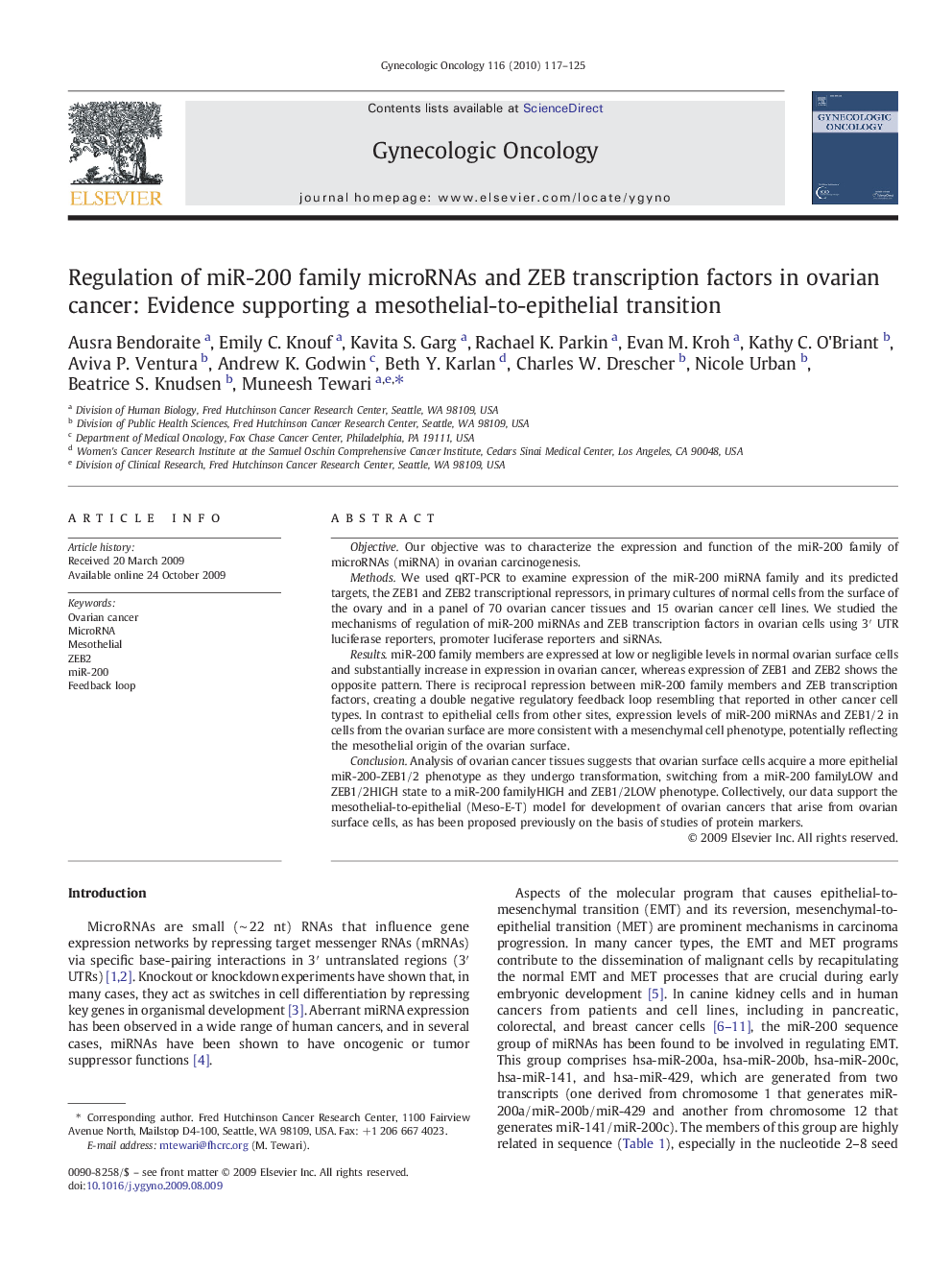| Article ID | Journal | Published Year | Pages | File Type |
|---|---|---|---|---|
| 3943207 | Gynecologic Oncology | 2010 | 9 Pages |
ObjectiveOur objective was to characterize the expression and function of the miR-200 family of microRNAs (miRNA) in ovarian carcinogenesis.MethodsWe used qRT-PCR to examine expression of the miR-200 miRNA family and its predicted targets, the ZEB1 and ZEB2 transcriptional repressors, in primary cultures of normal cells from the surface of the ovary and in a panel of 70 ovarian cancer tissues and 15 ovarian cancer cell lines. We studied the mechanisms of regulation of miR-200 miRNAs and ZEB transcription factors in ovarian cells using 3′ UTR luciferase reporters, promoter luciferase reporters and siRNAs.ResultsmiR-200 family members are expressed at low or negligible levels in normal ovarian surface cells and substantially increase in expression in ovarian cancer, whereas expression of ZEB1 and ZEB2 shows the opposite pattern. There is reciprocal repression between miR-200 family members and ZEB transcription factors, creating a double negative regulatory feedback loop resembling that reported in other cancer cell types. In contrast to epithelial cells from other sites, expression levels of miR-200 miRNAs and ZEB1/2 in cells from the ovarian surface are more consistent with a mesenchymal cell phenotype, potentially reflecting the mesothelial origin of the ovarian surface.ConclusionAnalysis of ovarian cancer tissues suggests that ovarian surface cells acquire a more epithelial miR-200-ZEB1/2 phenotype as they undergo transformation, switching from a miR-200 familyLOW and ZEB1/2HIGH state to a miR-200 familyHIGH and ZEB1/2LOW phenotype. Collectively, our data support the mesothelial-to-epithelial (Meso-E-T) model for development of ovarian cancers that arise from ovarian surface cells, as has been proposed previously on the basis of studies of protein markers.
